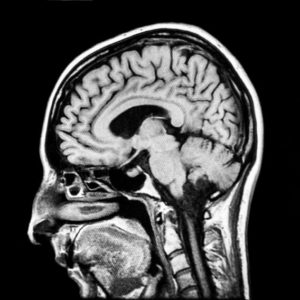 Autism is rarely out of the news. Yet despite increasing levels of investigative research, the origin of the condition is still poorly understood.
Autism is rarely out of the news. Yet despite increasing levels of investigative research, the origin of the condition is still poorly understood.
Characterized by a difficulty communicating and interacting with others, as well as ritualized and stereotyped behaviors, autism spectrum disorders (ASD) are estimated to affect 1 in 68 children in the United States.
In the U.S., there are more than 3 million people with ASD, and tens of millions across the globe.
Although the driving forces behind the development of ASD are unclear, genetics appear to play a part; around 1 in 5 children with siblings who have ASD will develop the condition themselves.
A research team from Carolina Institute for Developmental Disabilities at the University of North Carolina, led by Dr. Joseph Piven, recently set out to investigate this sibling relationship and its neural correlates.
Predicting autism in babies
Over recent years, there has been an increasing drive to find biological markers for diseases, including autism. As it stands, by the time many mental conditions are diagnosed, significant changes have already taken place within the brain. Catching changes earlier will not only help to improve our understanding of the disease’s progression, but it will also assist in the hunt for new treatments.
With this in mind, Dr. Piven and his team took MRI scans of the younger siblings of children with autism. By measuring a number of parameters, they searched for patterns in brain alterations that might predict future ASD outcomes.
“Typically, the earliest an autism diagnosis can be made is between ages 2 and 3. But for babies with older autistic siblings, our imaging approach may help predict during the first year of life which babies are most likely to receive an autism diagnosis at 24 months.”
Dr. Joseph Piven, senior author
The study took place across a number of sites in the U.S., including the University of North Carolina, the University of Washington, Washington University in St. Louis, MO, and the Children’s Hospital of Philadelphia, PA. The study was funded by the NIH Autism Centers for Excellence Program, and its intriguing findings are published today in the journal Nature.
In their search for biological markers of ASD in developing children, the team analyzed MRI scans at 6 and 12 months of age. They compared the scans of three groups:
Infants with an older sibling with autism (high-risk) who went on to develop autism after the age of 2
Infants with an older sibling with autism who did not develop autism after the age of 2
Infants with a low family risk who did not go on to develop autism.
The researchers measured surface area, brain volume, and cortical thickness. By plugging this data into a computer program, the team designed an algorithm to predict whether an infant would later develop ASD. They then tested the accuracy of this algorithm in a separate trial.
The brain differences as computed by the algorithm were shown to correctly predict 8 out of the 10 children who would later go on to develop autism.
Brain hyperexpansion and autism
Specifically, the researchers found that babies who went on to develop autism showed hyperexpansion of the brain’s surface area between 6 and 12 months of age. This increase in surface area at an early stage was linked to an increased growth rate of the brain’s overall volume in the second year of life.
This finding confirms earlier studies that also found accelerated expansion of cortical surface area in ASD. Scientists believe that this expansion may impair the way in which cortical white matter develops.
As Dr. Piven says: “This means we potentially can identify infants who will later develop autism, before the symptoms of autism begin to consolidate into a diagnosis.” If parents have a child with autism and then go on to have another child, this test could help to spot changes in the younger sibling before the 24-month mark; it provides the opportunity to intervene when the brain is still in its most malleable state. Although there is still no cure, early intervention provides an opportunity to reduce symptoms and improve social, cognitive, and emotional skills.
“We haven’t had a way to detect the biomarkers of autism before the condition sets in and symptoms develop,” Piven said. “Now we have very promising leads that suggest this may, in fact, be possible.”
The authors caution that further studies are needed, but say that the results are a strong first step along the road to pre-onset interventions in ASD.
MNT DT






